JProcRSNSW 1866-
Contents of JProcRSNSW, Vol. 40, 1906.
Henry Alfred Lenehan,
1. Presidential address. Earthquake, eclipse, the Moon, Mars, Jupiter, Saturn, observatories, etc.
Journal and Proceedings of the Royal Society of New South Wales 40: 1-38, 1906.Joseph Henry Maiden.
2. Notes on some plants which in drying stain paper.
Journal and Proceedings of the Royal Society of New South Wales 40: 39-45, 1906.H. Burchartz,
3. The testing of building materials on abrasion by the sand blast apparatus.
Journal and Proceedings of the Royal Society of New South Wales 40: 45-51, 1906.Richard Thomas Baker,
4. Vitis opaca, F.v.M., and a chemical investigation of its enlarged rootstock (tuber).
Journal and Proceedings of the Royal Society of New South Wales 40: 52-60, 1906.Richard Thomas Baker,
5. The Australian melaleucas and their essential oils.
Journal and Proceedings of the Royal Society of New South Wales 40: 60-69, 1906.Lawrence Hargrave.
6. Port Sydney.
Journal and Proceedings of the Royal Society of New South Wales 40: 69-74, 1906.Joseph Henry Maiden,
7. The international rules of botanical nomenclature. (Adopted by the International Botanical Congress, Vienna, 1905.)
Journal and Proceedings of the Royal Society of New South Wales 40: 74-94, 1906.Robert Hamilton Mathews,
8. Notes on some native tribes of Australia.
Journal and Proceedings of the Royal Society of New South Wales 40: 95-129, 1906.C. A. Süssmilch,
9. Note on the Silurian and Devonian rocks occurring to the west of the Canoblas Mountains near Orange, N.S.W.
Journal and Proceedings of the Royal Society of New South Wales 40: 130-141, 1906.Edwin Cheel.
10. Bibliography of Australian, New Zealand, and South Sea island lichens, Second Paper.
Journal and Proceedings of the Royal Society of New South Wales 40: 141-154, 1906.Sidney G. Walton, with a petrological description by R S Bonney.
11. Analyses of chocolate shale and of tufaceous sandstone from the Narrabeen series.
Journal and Proceedings of the Royal Society of New South Wales 40: 154-157, 1906.Sydney Gordon Lusby and T. Ewing,
12. The rate of decay of the excited radio-activity from the atmosphere in Sydney.
Journal and Proceedings of the Royal Society of New South Wales 40: 158-160, 1906.Archibald Liversidge,
13. Gold nuggets from New Guinea showing a concentric structure,
Journal and Proceedings of the Royal Society of New South Wales 40: 161-162, 1906.C. J. White,
14. Analyses of Roman glass from Silchester, with special reference to the amount of manganese and iron present.
Journal and Proceedings of the Royal Society of New South Wales 40: 163-170, 1906.Engineering Section:
W. E. Cook
15. Washing and grading sand for concrete.
Journal and Proceedings of the Royal Society of New South Wales 40: I-XXIII, 1906.Henry Deane Walsh,
16. Notes on wharf construction, Sydney Harbour.
Journal and Proceedings of the Royal Society of New South Wales 40: XXIV-XLVI, 1906.R. T. McKay,
17. The available water derivable from gathering grounds, the loss, the reason for such loss, and the relation between rainfall and discharge of the Murray River and its tributaries.
Journal and Proceedings of the Royal Society of New South Wales 40: XLVI-LXXXII, 1906.Thomas Rooke,
18. Irrigation work in California, and its relation to the transmission of electricity.
Journal and Proceedings of the Royal Society of New South Wales 40: LXXXII-C, 1906.James Nangle,
19. Transverse tests of Jarrah made at Sydney Technical College
Journal and Proceedings of the Royal Society of New South Wales 40: CI-CV, 1906.
Examples of text formats
This article (originally a post) shows what each of the preferred text formats looks like when published on the RSNSW site. The appearance of these formats differs from what is shown in the supposedly WYSIWYG editor, because it is controlled by the site's CSS. This is a device used (among many other things) to give a characteristic look to a site, but it can be defeated if post authors do not adhere to a set of ground rules. The first of these is: keep the title of the post or article (above) to as few words as possible.
Avoid the excessively 'shouty' formats Heading 1 and Heading 2.
Heading 3 - use this for the detailed title, e.g. the lengthy title chosen by the lecturer, or the lecturer's name, but preferably not both.
Heading 4 - use this for essential information about (e.g.) place and time.
Heading 5 - this can be used for sub-headings of the main text.
Heading 6 - avoid this one, which is smaller than Paragraph text.
Paragraph bolded looks the same as Heading 5, but can be used on specific words within a line of text, whereas Heading 5 will control the entire line. Note that the text colour of the above formats changes automatically between black, grey and a specific shade of red. It is best to confine the bolded effect to a couple of words used as the paragraph heading. If you want emphasis within the paragraph text, use italics.
Paragraph not bolded - use unbolded Paragraph for the main text.
Choices such as Span, Code, Section and Article are not used in our CSS, i.e. give the same appearance as Paragraph.
Each of the above formats is obtained by highlighting the text in question and selecting the required format from the drop-down list which by default shows the word Paragraph. The drop-downs for Styles, Font family and Font size are not used, i.e. are left in their default positions. If you import text from elsewhere by copy-and-paste, i.e. ctrl-C and ctrl-V, it will import its own specifics of font. These should be disabled by reselecting the default settings 'Font family' and 'Font size'. However, the WYSIWYG editor is not good at removing existing formatting, and you will need to toggle to the HTML display to delete unwanted formatting which persists.
Figure captions - this is the only format which you need to set specifically: highlight the caption text and select Italic, then from the drop-down menu 'Font size', select 8pt.
I am going to link the RSNSW Endnote style here.
Bequests
Over the last 160 years, the Society has benefited greatly from generous bequests both from Members and other benefactors. Most of the society's prestigious awards and much of its library were established as a consequence of bequests. Even a relatively small bequest increases in value over time and contributes to the long-term viability of the Society. Large bequests greatly increase the potential for the Society to make lasting and influential contributions to intellectual life in New South Wales and to Australia's future.
You may download forms here should you wish to make a bequest to the Society: Bequest wording
Late Distinguished Fellows of the Society
This page provides information about past Distinguished Fellows of the Society:
- Professor Gavin Brown AO FAA CorrFRSE DistFRSN (1942–2010)
- Professor David Craig AO FRS FAA DistFRSN (1919–2015)
- Emeritus Professor Noel Hush AO DSc FRS FNAS FAA FRACI DistFRSN (1924–2019)
- Professor Jak Kelly FAIP DistFRSN (1928–2012)
- Professor Lord May of Oxford OM AC Kt FRS DistFRSN CorrFAA HonFAIB FTSE (1936-2020)
- Professor Richard Stanton AO DistFRSN FAA (1926-2015)
Professor Gavin Brown AO FAA CorrFRSE DistFRSN (1942–2010)
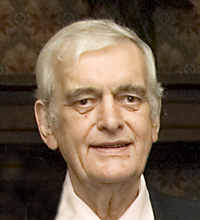 Gavin Brown was a distinguished mathematician and educator. He was Inaugural Director of the Royal Institution of Australia after 12 years as Vice-Chancellor and Principal of the University of Sydney. His academic career began at the University of Liverpool, where he became a senior lecturer in mathematics. He accepted the Chair of Pure Mathematics at the University of New South Wales in 1975 when he and his family emigrated to Australia. At the University of New South Wales, he held a number of academic administrative posts, including Head of the School of Mathematics, and Dean of the Faculty of Science. In 1992, he became the Deputy Vice-Chancellor (Research) at the University of Adelaide and later, in 1994, he became Vice-Chancellor. He was appointed Vice-Chancellor of the University of Sydney in 1996.
Gavin Brown was a distinguished mathematician and educator. He was Inaugural Director of the Royal Institution of Australia after 12 years as Vice-Chancellor and Principal of the University of Sydney. His academic career began at the University of Liverpool, where he became a senior lecturer in mathematics. He accepted the Chair of Pure Mathematics at the University of New South Wales in 1975 when he and his family emigrated to Australia. At the University of New South Wales, he held a number of academic administrative posts, including Head of the School of Mathematics, and Dean of the Faculty of Science. In 1992, he became the Deputy Vice-Chancellor (Research) at the University of Adelaide and later, in 1994, he became Vice-Chancellor. He was appointed Vice-Chancellor of the University of Sydney in 1996.
He authored more than a hundred research papers and was on the editorial board of several international journals. His research areas have been broad, including measure theory and algebraic geometry. He held a Master of Arts degree (1st Class Honours and the Duncan Medal) from the University of St Andrews and a PhD from the University of Newcastle-upon-Tyne. Professor Brown's contributions to education and mathematics have been recognised worldwide. He was a Fellow of the Australian Academy of Science and a Corresponding Fellow of the Royal Society of Edinburgh. In 2001 he was awarded the Centenary Medal for service to Australian society and university administration and mathematics.
In 2006 he was appointed an Officer of the Order of Australia for service to tertiary education in Australia and internationally as an advocate for excellence and through the establishment of strategic links with overseas institutions, and to mathematical research. Professor Brown also received the Royal Society of New South Wales Medal.
Professor Brown died in December 2010.
Professor David Craig AO FRS FAA DistFRSN (1919–2015)
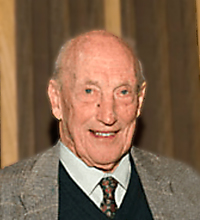 David Parker Craig was a distinguished chemist. His career began with his appointment as Professor of Physical Chemistry at the University of Sydney in 1952. In 1956 he was appointed Professor of Theoretical Chemistry at University College London. He returned to Australia in 1967 to begin his long association with the Australian National University. In that year he was appointed Professor of Physical and Theoretical Chemistry, in which role he continued until 1984. During this time he was Dean of the Research School of Chemistry twice, from 1970-1973 and from 1977-1981. He was an Executive Member of the CSIRO from 1980 to 1985, when he was given the title of Emeritus Professor by the Australian National University. David Craig's research work was in several fields but was especially pioneering in the then new and very difficult field of excitons in molecular crystals. He also did important work in the field of molecular quantum electrodynamics. In 1985 he was appointed an Officer of the Order of Australia. He was Fellow of the Royal Australian Chemical Institute, a Fellow of the Royal Institute of Chemistry (London), a Fellow of the Royal Society, and a Fellow of the Australian Academy of Science, serving as President from 1990 to 1994. He was awarded Doctor of Science (honoris causa) from the University of Sydney and Honorary Doctor of Chemistry from the University of Bologna.
David Parker Craig was a distinguished chemist. His career began with his appointment as Professor of Physical Chemistry at the University of Sydney in 1952. In 1956 he was appointed Professor of Theoretical Chemistry at University College London. He returned to Australia in 1967 to begin his long association with the Australian National University. In that year he was appointed Professor of Physical and Theoretical Chemistry, in which role he continued until 1984. During this time he was Dean of the Research School of Chemistry twice, from 1970-1973 and from 1977-1981. He was an Executive Member of the CSIRO from 1980 to 1985, when he was given the title of Emeritus Professor by the Australian National University. David Craig's research work was in several fields but was especially pioneering in the then new and very difficult field of excitons in molecular crystals. He also did important work in the field of molecular quantum electrodynamics. In 1985 he was appointed an Officer of the Order of Australia. He was Fellow of the Royal Australian Chemical Institute, a Fellow of the Royal Institute of Chemistry (London), a Fellow of the Royal Society, and a Fellow of the Australian Academy of Science, serving as President from 1990 to 1994. He was awarded Doctor of Science (honoris causa) from the University of Sydney and Honorary Doctor of Chemistry from the University of Bologna.
Additional detail and information is contained in a comprehensive interview with Professor Craig, conducted by Professor Bob Crompton in 1998, that is published on the Australian Academy of Science website.
Professor Craig died in July 2015.
Emeritus Professor Noel Hush AO DSc FRS FNAS FAA FRACI DistFRSN (1924–2019)
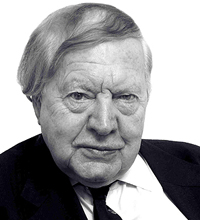 Professor Hush was one of Australia's most distinguished and internationally renowned chemists with outstanding achievements in computational and theoretical quantum chemistry. In a long career of academic research, he worked to provide understanding at the basic quantum-theoretical level of chemical properties and reactivities. This was extremely wide-ranging in scope, a continuing theme being the dynamics of electron transfer reactions, from through-molecule electron transport to electrode processes, photosynthesis and most recently, molecular electronics, the ultimate form of nanotechnology. His most renowned achievement was the development, commencing in the 1960’s, of a model for electron transfer, which is often referred to as the Marcus-Hush theory.
Professor Hush was one of Australia's most distinguished and internationally renowned chemists with outstanding achievements in computational and theoretical quantum chemistry. In a long career of academic research, he worked to provide understanding at the basic quantum-theoretical level of chemical properties and reactivities. This was extremely wide-ranging in scope, a continuing theme being the dynamics of electron transfer reactions, from through-molecule electron transport to electrode processes, photosynthesis and most recently, molecular electronics, the ultimate form of nanotechnology. His most renowned achievement was the development, commencing in the 1960’s, of a model for electron transfer, which is often referred to as the Marcus-Hush theory.
In 1972, after 23 years at major universities in the United Kingdom, Professor Hush returned to Australia to establish this country's first academic department devoted to theoretical chemistry – at The University of Sydney. A wide-ranging teaching program was introduced, and a flourishing research program evolved. His work established both Australia and The University of Sydney as major world players in the field. This legacy continued long after his retirement, with Theoretical Chemistry being listed in 2011 as one of 15 research areas at which the University is internationally truly outstanding. Professor Hush himself remained actively engaged in research at the University to the end of his life.
Professor Hush was elected a Fellow of the Australian Academy of Science, of the Royal Society of London, and to Foreign Membership of the U.S. Academy of Arts and Sciences, as well as an Officer of the Order of Australia. In 2007 he was awarded the Robert A. Welch Prize, the major United States award for chemical research and second only to the Nobel Prize as an honour in Chemistry, given for the first time for Theoretical Chemistry. Other awards included the David Craig Medal and the Finder Medal of the Australian Academy of Sciences, and the Centenary medal of the Royal Academy of Chemistry (UK).
Professor Hush died in March 2019. An obituary, written by Donald Hector FRSN, a former President of the Royal Society of NSW, has been published in the Society's Journal & Proceedings.
Professor Jak Kelly FAIP DistFRSN (1928–2012)
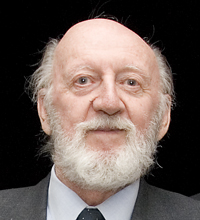 Jak Kelly was a scientist of international stature in applied physics. He was awarded a Doctor of Science by the University of NSW, was a Fellow of the Australian Institute of Physics and a Fellow of the Institute of Physics in the UK. After graduating with a Bachelor of Science from the University of Sydney, he joined the CSIRO and later obtained a PhD from the University of Reading in the UK where he solved the problem of measuring the surface tension of molten tungsten and other refractory metals. Following a senior scientific position at the Harwell Atomic Energy Establishment in the UK, he joined the University of New South Wales and established an internationally renowned research centre on ion implantation and material defects. His research included basic discoveries in thermoluminescent dating and the development of new systems of ion beam optics and laser and plasma physics. He jointly invented a photovoltaic solar collector surface, which, at the time, was the world's most efficient and is now in mass production in China. This work was published in some 150 refereed papers and several patents.
Jak Kelly was a scientist of international stature in applied physics. He was awarded a Doctor of Science by the University of NSW, was a Fellow of the Australian Institute of Physics and a Fellow of the Institute of Physics in the UK. After graduating with a Bachelor of Science from the University of Sydney, he joined the CSIRO and later obtained a PhD from the University of Reading in the UK where he solved the problem of measuring the surface tension of molten tungsten and other refractory metals. Following a senior scientific position at the Harwell Atomic Energy Establishment in the UK, he joined the University of New South Wales and established an internationally renowned research centre on ion implantation and material defects. His research included basic discoveries in thermoluminescent dating and the development of new systems of ion beam optics and laser and plasma physics. He jointly invented a photovoltaic solar collector surface, which, at the time, was the world's most efficient and is now in mass production in China. This work was published in some 150 refereed papers and several patents.
Jak Kelly was Chairman of the Faculty of Science, University of New South Wales from 1984 to 1989, and Associate Professor and Head of the School of Physics from 1985 to 1989. On retiring in 1989, he was made a Visiting Professor at University of New South Wales, and in 2004 was made an Honorary Professor at University of Sydney.
Over many years, he contributed much to the Royal Society of NSW: as President, Vice-President and for some time as Editor of its peer-reviewed Journal.
Professor Kelly died in February 2012.
Professor Lord May of Oxford OM AC Kt FRS DistFRSN CorrFAA FTSE HonFAIB (1936–2020)
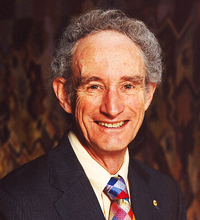 Lord Robert May of Oxford was a pioneering Australian scientist whose work in biology led to the development of chaos theory. He was one of Australia's most accomplished scientists, being elevated to the peerage in 2001, and rising to serve as the Chief Scientific Advisor to the United Kingdom Government (1995–2000), as President of the Royal Society (2000–05) and as a member of the UK Government's Climate Change Committee, a non-executive director of the UK Defence Science & Technology Laboratories, and Chair of the Trustees of the Natural History Museum.
Lord Robert May of Oxford was a pioneering Australian scientist whose work in biology led to the development of chaos theory. He was one of Australia's most accomplished scientists, being elevated to the peerage in 2001, and rising to serve as the Chief Scientific Advisor to the United Kingdom Government (1995–2000), as President of the Royal Society (2000–05) and as a member of the UK Government's Climate Change Committee, a non-executive director of the UK Defence Science & Technology Laboratories, and Chair of the Trustees of the Natural History Museum.
Born in Sydney on 8 January 1936, he completed his PhD in theoretical physics at the University of Sydney in 1959, before taking a lectureship in applied mathematics at Harvard University (1959–61), subsequently returning to the University of Sydney in 1962 where he was appointed to a Chair in Theoretical Physics, in 1969, at the age of 33. His career then took him to Princeton where, as Professor of Zoology, he made pioneering advances during the 1970s and 1980s in the field of population biology through the application of advanced mathematical techniques. He played a key role in the development of the field of theoretical ecology, subsequently applying these methods to the study of disease and biodiversity. From 1988 to 1995 he held a Royal Society Research Professorship at Imperial College and the University of Oxford, where he became a Fellow of Merton College.
He was awarded a Knighthood in 1996 and was appointed a Companion of the Order of Australia in 1998, both for “services to science” In 2001, he was one made of the first 15 Life Peers created by the House of Lords Appointments Commission, while in 2002, Her Majesty The Queen appointed him to the Order of Merit—only the ninth Australian in its 100-year history.
His many honours included the Royal Swedish Academy’s Crafoord Prize; the Swiss-Italian Balzan Prize; and the Japanese Blue Planet Prize. He was a Foreign Member of the US National Academy of Sciences, an Overseas Fellow of the Australian Academy of Sciences, an Honorary Fellow of the Royal Academy of Engineering and several other Academies and Learned Societies in the UK, USA and Australia, and a Distinguished Fellow of the Royal Society of NSW. In 2007, he received the Royal Society's Copley Medal, its oldest (1731) and most prestigious award, given annually for “outstanding achievements in research in any branch of science”.
Lord May died at the age of 84 on 28 April 2020.
Tributes to the passing of a truly gifted polymath, and further insights into the outstanding intellect of Lord Robert May, whose achievements spanned biology, physics, and public policy, can be found in:
- An obituary in the Guardian and a follow up letter to the Guardian by Dr Len Fisher
- An obituary in the New York Times
- An tribute from Merton College, Oxford (including links to obituaries in The Times and The Telegraph)
- A tribute from the community of Imperial College, London
- A tribute from the UK Government Chief Scientific Advisor, Sir Patrick Vallance
- An obituary written by Dr Len Fisher in the RSNSW Journal and Proceedings (vol. 153 pt1)
- A 2011 interview with Robyn Williams of the ABC Science Show, rebroadcast on ABC Radio National on 13 June 2020
- A BBC Radio 4 interview with Jonathan Krebs
- An article in The Conversation by Hamish McCallum
- A Wikipedia entry.
Professor Richard Stanton AO DistFRSN FAA (1926–2020)
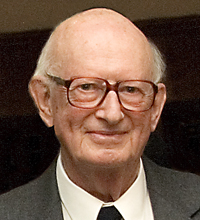 Richard Limon Stanton was a distinguished economic geologist. He was Professor of Geology at the University of New England, Armidale from 1975 to 1986 and subsequently Emeritus Professor. He was a Fellow of the Australian Academy of Science, elected in 1975 for his original contributions to the genesis of ore deposits. Awarded an MSc and PhD from the University of Sydney, Richard Stanton’s subsequent achievements focused on mineral exploration. He recognised the role of volcanism and sedimentation in the formation of new ore deposits, and the physics and chemistry involved in the concentration of copper, zinc and lead in volcanic lavas. This is documented in his numerous publications and books, including Ore Petrology, The Precursor Principle, and Ore Elements in Arc Lavas.
Richard Limon Stanton was a distinguished economic geologist. He was Professor of Geology at the University of New England, Armidale from 1975 to 1986 and subsequently Emeritus Professor. He was a Fellow of the Australian Academy of Science, elected in 1975 for his original contributions to the genesis of ore deposits. Awarded an MSc and PhD from the University of Sydney, Richard Stanton’s subsequent achievements focused on mineral exploration. He recognised the role of volcanism and sedimentation in the formation of new ore deposits, and the physics and chemistry involved in the concentration of copper, zinc and lead in volcanic lavas. This is documented in his numerous publications and books, including Ore Petrology, The Precursor Principle, and Ore Elements in Arc Lavas.
Professor Stanton was Royal Society and Nuffield Foundation Bursar at Imperial College London and the University of Durham in 1964 and won a Fulbright Award in 1966. He won the Goldfields Gold Medal of the Institute of Mining and Metallurgy (London) in 1976 and the William Smith Medal of the Geological Society (London) in 1987. He became an Honorary Fellow of the Institute of Mining and Metallurgy (London) in 1984 and was Vice-President of the Australian Academy of Science from 1989 to 1990. He was elected an Honorary Fellow of the Geological Society of America in 1991, and was awarded the W. R. Browne Medal of the Geological Society of Australia in 1990, the Penrose Medal of the Society of Economic Geologists in 1993, and the Haddon Forrester King Medal of the Australian Academy of Science in 1998.
Professor Stanton joined the Royal Society of NSW on 27 July 1949 and was one of its longest standing members. During his career, he received several awards from the Society, including the Olle Prize in 1972, the Society’s Medal in 1973, and the Clarke Medal in 1998, and he presented the Clarke Memorial Lecture in 1985. He was made an inaugural Fellow of the Society in 2009 and was elevated to Distinguished Fellowship in 2012. Also, he was instrumental in the successful operation, and served as a long-standing chair, of the New England Branch of the Society. He was honoured for his achievements by becoming an Officer of the Order of Australia in 1996.
Additional detail and information is contained in a comprehensive interview with Professor Stanton, conducted by Professor Ken Campbell in 2008, that is published on the Australian Academy of Science website.
Professor Stanton died at the age of 94 on 25 August 2020.
The Society's meetings
The Society holds regular General Meetings that are open to the public, at which leading researchers and thinkers discuss the latest developments in all fields of science, art, literature and philosophy. There are two series of meetings: one in Sydney CBD and the other in the Southern Highlands.
About twelve meetings are held each year, usually on the first Wednesday of the month. These are held at various venues in Sydney, but currently usually at the Union University & Schools Club, 25 Bent Street. Meetings generally commence at 6:30 pm. (Be sure to check the web-site a few days before the event for final venue details and to confirm the start time. We often have dinner after the meeting - the cost is $80 per head for Members and $90 for non-members, for two courses and house wine. Pre-booking at least two days in advance is required.)
There is an admission charge for of $10 for Members and $20 for non-members to help cover the cost of the venue; this includes a welcome drink.
Visitors are welcome to attend General Meetings of the Society. Reports on these are published on the web-site.
Click here for our full 2015 Lecture Series.
Summaries of talks given this year may be found at the 2016 Events page.

